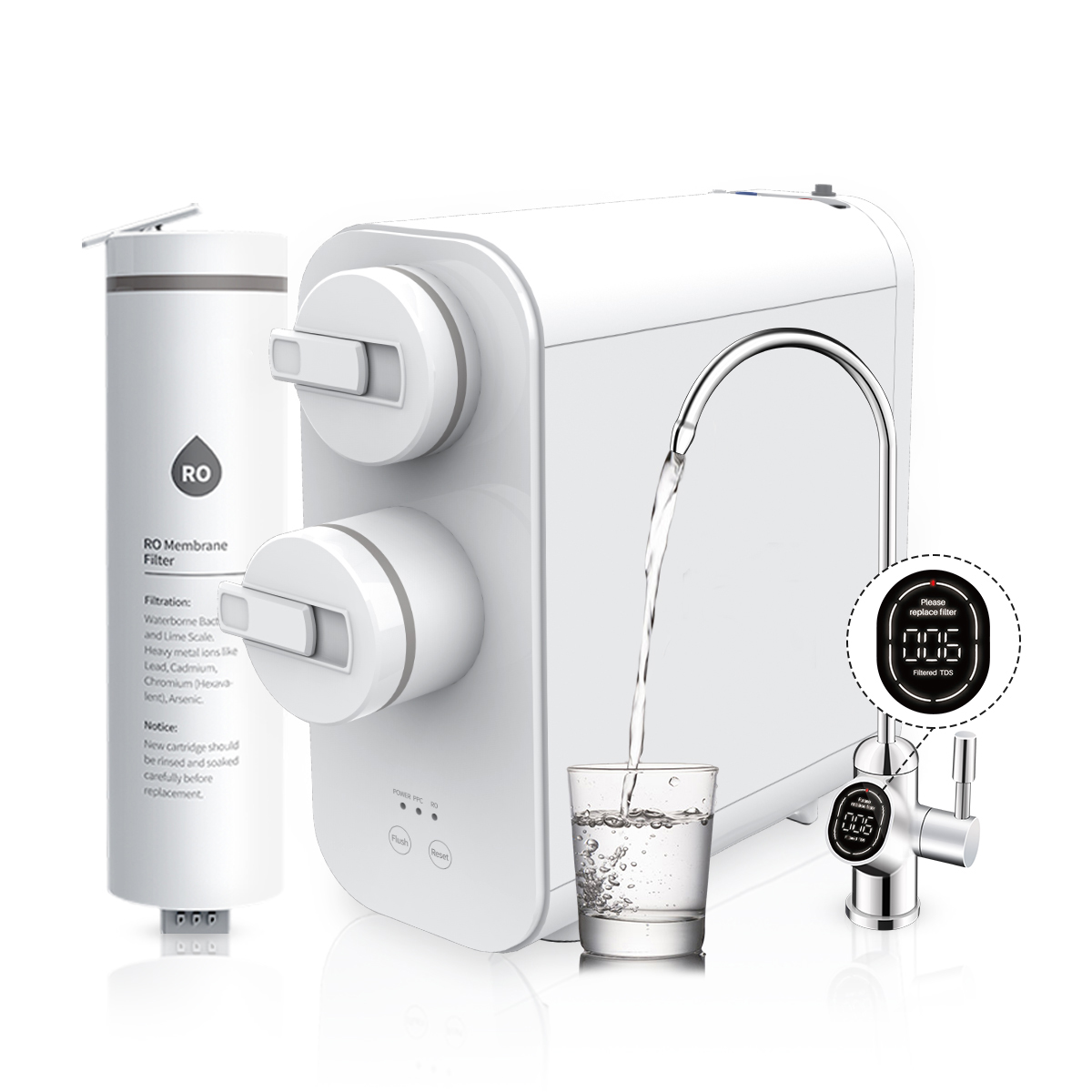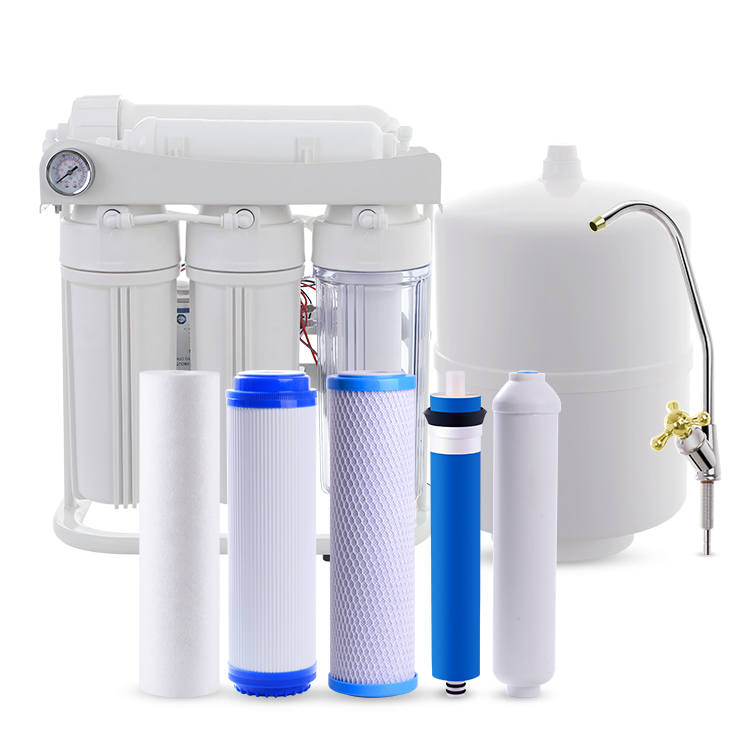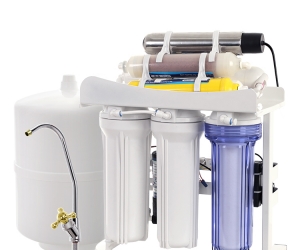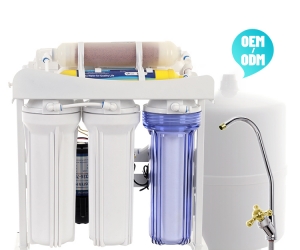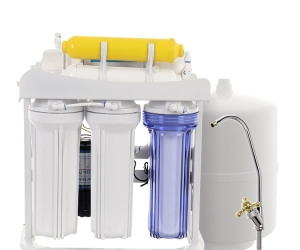RO water purifier is a common water filter that removes pollutants in water. It is used in business or home. Household RO water purifier are generally installed under the kitchen sink to filter impurities in the water. It can remove 95% of residual chlorine, 99.9% of heavy metals and other harmful substances, and provide pure drinking water for the family. Compared with buying bottled water, it is cheaper.
Although the RO water purifier has a perfect water purification function, it also has disadvantages from some perspectives. First of all, RO water purifiers can remove minerals in water, and drinking soft water for a long time will also be harmful to the body. Secondly, it is well known that a parameter of the RO water purifier is called the wastewater ratio, which produces both pure water and wastewater, and there is a ratio between the two. So is the RO water purifier really "waste water"?
RO water purifiers work by cross-flow filtering water through multiple membranes to remove particulates and pollutants. Pure water goes into the tank, and waste water containing pollutants flows into the sewer. It is true that the raw water entering the RO water purifier is more than the pure water that can be used for drinking. Is it a waste? The reason why RO water purifiers "waste" water is because the pollutants trapped in the RO membrane need to be washed away. Just like washing your hands, when you wash your hands with soap, the water that removes the dirt from your hands goes into the sewer, but it doesn't feel like a waste because it's just a process of cleaning. Washing your hands brings health benefits to your family, and drinking water is the same. That is to say, in the case of reverse osmosis, it is legitimate to use water instead of "wasting" water.
A good RO water purifier will use as little water as possible to do the cleaning work. There are many factors that affect the water consumption of the RO water purifier, including pollutants, the amount of dissolved solids in the water, water temperature, membrane recovery rate, water purifier condition, age of reverse osmosis system, type of RO membrane used, etc.
To be clear, a poorly maintained or inefficient RO water purifier wastes a lot of water, and this is primarily a problem with poor design rather than the RO membrane itself.
The average wastewater ratio of RO water purifiers is 4:1, but with the advancement of technology, ro water purifier with low wastewater ratios continue to appear
1. Yunda/Bestpure(wholesale manufacturer) UTR400 RO water purifier, 600 GPD fast flow, 1.5:1 waste water ratio, 3 seconds replace filter element, 9 seconds full up one cup of 300ml water, TDS display faucet and replace filter element reminder.
2. Bestpure(wholesale manufacturer) 5-stage RO water purifier, 75-200GPD is optional, the wastewater ratio is 1.2:1, and the filter element only needs to be replaced once every two years



